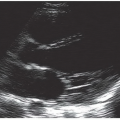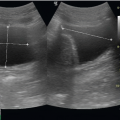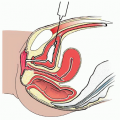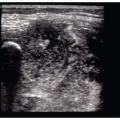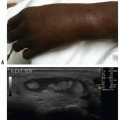Implementing Ultrasound into the Academic Emergency Department
David P. Bahner
Eric J. Adkins
John L. Kendall
INTRODUCTION
During the early evolutionary years of emergency ultrasound, there was little distinction made between the processes needed to establish and build ultrasound programs in the community and academic environments. The two settings share some common challenges: obtaining acceptance of point-of-care ultrasound as a standard of care, training and credentialing physicians, assuring quality, and maintaining equipment. However, there are important differences in the two practice settings, their mission, and the scope of activities they pursue. Academic programs have a greater range of trainees each with their own needs, including medical students, residents, fellows, and faculty staff. Leaders of academic programs have an expanded and critical role in defining content and developing curriculums appropriate for different levels of training. They should also lead the way in developing effective methods of teaching, using newer innovative methods such as asynchronous methods and simulation. Ultimately, they bear the responsibility of setting standards for assessing competency of trainees with a rigor that has seen increasing scrutiny in all areas of medical education. Academic centers also need to establish priorities for research to justify expanded use for clinical applications, as well as assess the efficacy, cost effectiveness, and impact of point-of-care ultrasound on patient outcomes. Ultimately, academic centers need to train new leaders who can teach, write, and contribute to the future of the specialty.
This chapter will describe the qualities of an academic emergency ultrasound program, discuss how an academic ultrasound program can further a department’s academic mission, and detail the challenges facing an academic program.
CURRENT STATE OF EDUCATION IN EMERGENCY ULTRASOUND
The first curriculum for emergency ultrasound was published in 1994 (1). Since that time, there has been a rapid growth in use, number and variety of applications, and improvement in point-of-care equipment. In 2001, ultrasound training became a required component of ACGME accredited emergency medicine training (2).There has been consistent organizational support for the advancement of ultrasound training from professional societies, including the American College of Emergency Physicians (ACEP), the Society for Academic
Emergency Medicine (SAEM), and the American Board of Emergency Medicine (ABEM); these organizations provide valuable resources for training programs and professional development. In 2008, consensus recommendations from the Council of Residency Directors (CORD) were released in an effort to set minimum training guidelines for residency training (3). Current training programs have assorted training methods and guidelines. A 2010 survey of training programs in emergency medicine reported that 79% of programs had structured ultrasound curriculums; some programs rely on self-directed learning largely dependent upon resident interest and effort (4). However, in the same year, a survey found that most (98%) graduates of emergency medicine programs make use of ultrasound in their day-to-day clinical practice (5). As interest has grown, ultrasound fellowships have evolved out of the desire for advanced training and to meet the need for experts to lead academic departments. There are currently 84 ultrasound fellowships available in the United States. While there has been much growth and expansion in the use of ultrasound, there remains considerable variation between programs.
Emergency Medicine (SAEM), and the American Board of Emergency Medicine (ABEM); these organizations provide valuable resources for training programs and professional development. In 2008, consensus recommendations from the Council of Residency Directors (CORD) were released in an effort to set minimum training guidelines for residency training (3). Current training programs have assorted training methods and guidelines. A 2010 survey of training programs in emergency medicine reported that 79% of programs had structured ultrasound curriculums; some programs rely on self-directed learning largely dependent upon resident interest and effort (4). However, in the same year, a survey found that most (98%) graduates of emergency medicine programs make use of ultrasound in their day-to-day clinical practice (5). As interest has grown, ultrasound fellowships have evolved out of the desire for advanced training and to meet the need for experts to lead academic departments. There are currently 84 ultrasound fellowships available in the United States. While there has been much growth and expansion in the use of ultrasound, there remains considerable variation between programs.
LEADERSHIP
Historically, the individual with the role of Ultrasound Director may have been a faculty member who simply had an interest in ultrasound, but who ultimately may not have viewed the position as a potential area of academic focus or career development. As emergency ultrasound has grown, the potential for an academic career focused on ultrasound and the vision of academic centers have changed. Advanced and specialized training in point-of-care ultrasound is now widely available, including ultrasound fellowships; this training provides an opportunity to develop not only advanced, expanded sonography skills, but also skills in program administration, teaching, and research. The talent and skills required to fill the role of Ultrasound Director have become increasingly more defined and demanding.
Leaders of ultrasound programs should be recognized as expert emergency sonographers. Their ultrasound expertise should be more advanced than a graduate from an emergency medicine residency program. Furthermore, their knowledge of advanced applications should be the basis for leading the department to implement new and cutting edge applications for bedside ultrasound.
Ultrasound faculty should also be renowned for their educational skill set, since it requires special talent to convey technology that includes motion, while at the same time doing it in such diverse settings as large and small groups, simulation centers, and at the bedside. Besides, ultrasound educators must be able to teach the skills to perform an exam, make diagnostic decisions, and guide procedures using ultrasound. As a result, the tool kit of ultrasound education involves much more than the ability to give a lecture.
The ultrasound leader needs to possess skill and proficiency in scholarly activities and research. The expertise of a superior Ultrasound Director can advance the research agenda that drives the search for new applications, approaches, or utilization of bedside ultrasound. When successful, an academic ultrasound leader places his/her department at the forefront of advances in ultrasound. Second, he/she contributes to the academic mission of the department and, when completed, serves to advance faculty toward academic promotion. Lastly, he/she mentors residents in scholarly activity early in their career.
Finally, ultrasound faculty need to be able administrators to organize and maintain ongoing image review, quality assurance, competency assessment, and machine maintenance for both faculty and residents, sometimes practicing at multiple sites.
Academic departments who lead the way in ultrasound teaching and research may find that the job of Ultrasound Director is bigger than any one individual. Large programs with diverse programmatic, administrative, and teaching needs or major ultrasound research efforts may require the resources of several faculty. Consequently, it may be advisable to combine the faculty’s talents in a Section or Division of Emergency Ultrasound. Specific guidelines for developing a Section or Division within an academic department are typically defined by rules within the School of Medicine and will vary from institution to institution.
SCOPE OF CLINICAL PRACTICE
A number of factors unique to an academic setting will drive the scope of clinical practice and the most relevant ultrasound applications. Most notably, educational needs of trainees should govern applications incorporated into clinical practice. Priority should be given to applications utilized during the resident’s clinical rotations, those they will be tested on for specialty certification, and skills they will need to enter the work force and stay up to date with current and future practice standards.
This approach to developing a scope of practice incorporates current recommendations, while also maintaining a vision for applications that will shape clinical practice after residents have completed their training. For example, current ACEP ultrasound guidelines should be considered the foundation for developing a scope of practice (6) (Table 1.1). True to the explorative nature of an academic setting, the ACEPdefined applications should not be considered exhaustive, but instead a starting point for defining clinical practice. Certain centers will have specific research, procedural, and population needs that will further define the scope of clinical practice.
EDUCATION AND CURRICULUM DEVELOPMENT
Once the scope of clinical practice has been defined, attention can be directed toward the department’s educational needs. In an academic ultrasound program, training can involve widely different audiences, educational backgrounds, preferred methods of delivery, and learning objectives. Not uncommonly, education is needed for faculty, residents, ultrasound fellows, medical students, and in some cases, physicians from other academic specialties or other medical providers. Each group merits special mention since they are varied in their educational challenges and needs.
Faculty
The education of emergency medicine faculty is a unique challenge since they represent diverse backgrounds, interests,
and abilities to assimilate new information. Their education is essential to the success of an ultrasound program; without their skills, the ability to incorporate point-of-care ultrasound into bedside decision making will inevitably be undermined for residents in training. Some departments offer time off for faculty to attend an ultrasound course; orchestrating a group of faculty to train together may be difficult. Consequently, the educational approach should prioritize flexibility. One method involves creation of didactic educational content that can be distributed electronically. This approach allows users to access the material at a convenient time and place and at their own pace. An alternative to developing de novo material is to use existing educational websites or electronic media. Regardless of how the didactic content is acquired, it is extremely important that it is robust enough to adequately train faculty to the scope of applications expected at their site of clinical practice.
and abilities to assimilate new information. Their education is essential to the success of an ultrasound program; without their skills, the ability to incorporate point-of-care ultrasound into bedside decision making will inevitably be undermined for residents in training. Some departments offer time off for faculty to attend an ultrasound course; orchestrating a group of faculty to train together may be difficult. Consequently, the educational approach should prioritize flexibility. One method involves creation of didactic educational content that can be distributed electronically. This approach allows users to access the material at a convenient time and place and at their own pace. An alternative to developing de novo material is to use existing educational websites or electronic media. Regardless of how the didactic content is acquired, it is extremely important that it is robust enough to adequately train faculty to the scope of applications expected at their site of clinical practice.
Equally necessary, but also difficult to arrange, is the hands-on portion of the education. One approach is to schedule sessions where faculty can do their scanning in a group. Another method is to schedule ultrasound scanning “office hours.” This entails assigning ultrasound faculty to a specific period of time in the clinical area where faculty members can scan with them one-on-one. These sessions can be devoted to specific applications or as an opportunity for faculty to hone their skills in areas of need.
Following successful completion of ultrasound education, faculty should obtain privileges for bedside ultrasound as outlined in Chapter 29.
Residents
Education of emergency medicine residents needs to be planned as a part of their formal didactic and experiential curriculum. Studies show significant variability in ultrasound training of residents (4). Fortunately, a number of alternatives exist for ensuring adequate resident ultrasound training. One method involves devoting a portion of the orientation schedule to ultrasound training. For example, a one-day course employing didactic and hands-on instruction can be used to introduce ultrasound early in training.
Following the introductory education, residents should be exposed, at a minimum, to 2 weeks of dedicated ultrasound instruction in the form of an ultrasound rotation, which has been shown to improve resident’s ultrasound knowledge and interpretation accuracy (7). It is the responsibility of an academic ultrasound program to ensure that the ultrasound rotation curriculum is robust and consistent from resident to resident over the course of an academic year. This is extremely important as one study found that 21% of programs had a resident “self-directed” curriculum, and only 64% of programs adhered to the ACEP Ultrasound Guidelines (4). Consequently, minimum requirements of a rotation should include predetermined didactic offerings, hands-on scanning, and video or image review. The didactics should cover basic and advanced applications and can be supplemented with reading assignments or access to multimedia educational modules. Hands-on sessions should occur in the form of scanning shifts, where residents have blocks of time without other patient care responsibilities to hone their sonography and ultrasound-guided procedural skills. A significant portion of the scanning shifts should be planned to occur with an ultrasound faculty member who can provide feedback on scanning technique, image acquisition, and interpretation. Lastly, a portion of the studies performed by the resident should be captured in either still image or video format for subsequent review by an ultrasound faculty. This is not only an opportunity for quality assurance, but also for timely feedback to the resident.
In addition to introductory education, an ultrasound rotation, and the ability to incorporate ultrasound into daily practice, it is important to develop a longitudinal ultrasound curriculum. This can be incorporated into the core curriculum and is recommended to include at least 20 hours of didactics specifically related to ultrasound over the course of a 3- or 4-year emergency medicine training program.
Ideally, after completing an ultrasound curriculum over the course of Emergency Medicine training, the resident will have met the standards for education and number of studies as outlined in the ACEP Guidelines (6).
Ultrasound Fellows
Emergency ultrasound fellow education requires a significant time commitment and goes well beyond resident or faculty ultrasound education in terms of scope and depth. In addition to advanced sonography skills, ultrasound fellowship training should have significant time devoted to program administration, teaching methods, and research. The basic requirements for an ultrasound fellowship are outlined in the ACEP Ultrasound Fellowship Guidelines (8).
Stay updated, free articles. Join our Telegram channel

Full access? Get Clinical Tree


